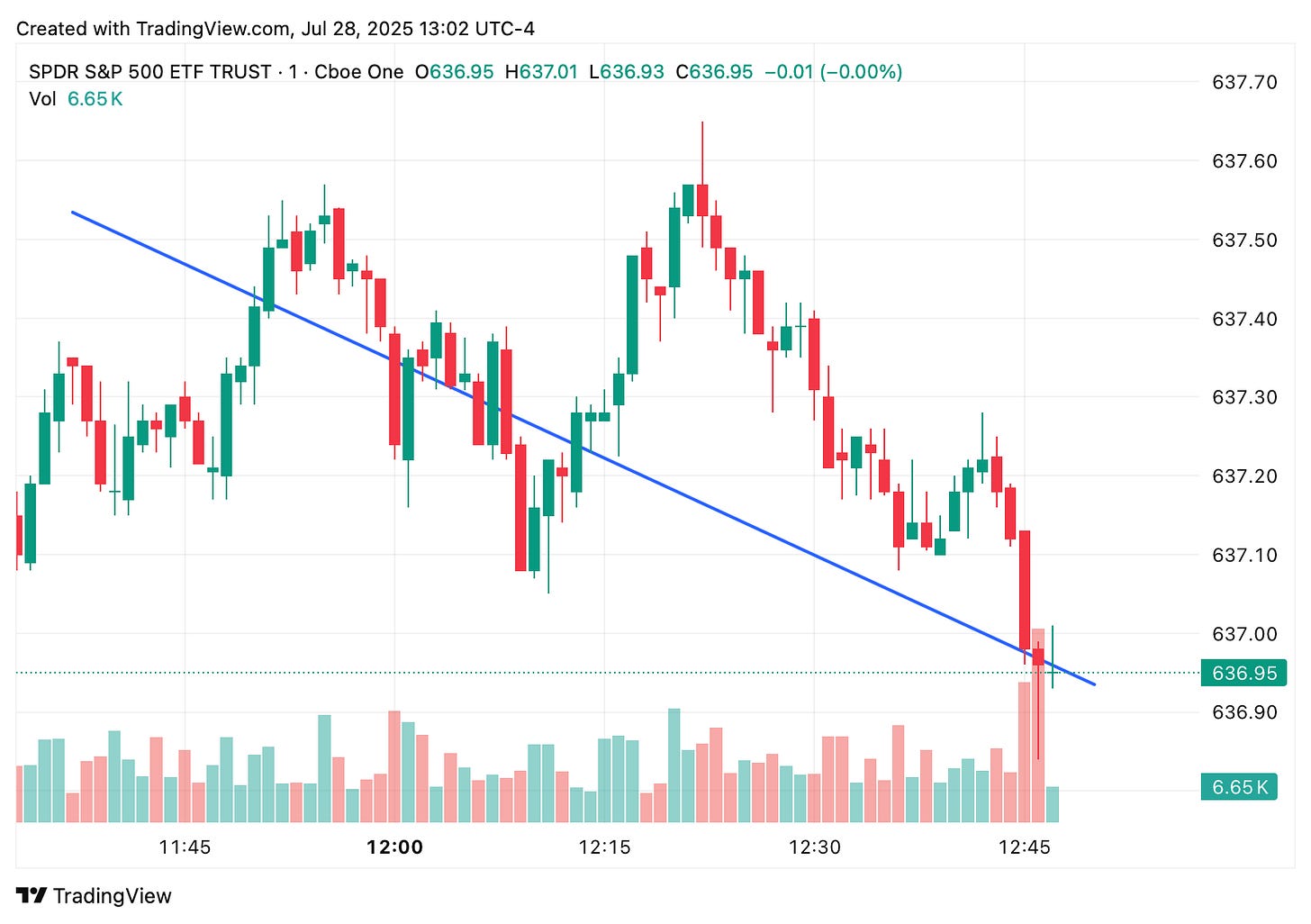Introducing Execution-Based Finance (EBF): High Frequency Cash Flow
Yesterday, I emphasized the importance of being a genuine scholar—not merely an academic insulated from execution.
Today, that distinction comes into sharper focus.
Just an hour ago, I issued a series of short-term trades, each clearly timestamped, with defined entries, targets, and stops. These were not theoretical models—they were live, real-time decisions grounded in the same principles introduced below. The trades played out as structured, offering a practical demonstration of the Execution-Based Finance (EBF) framework in action.
What follows is the abstract that underpins this methodology.
It formalizes the shift away from long-term abstraction toward adaptive, real-time cash flow—using capital only when advantage exists.
This isn’t just about theory. It's about control, precision, and outcome. It’s about returning finance to what it was always meant to be: executed.
Abstract
This paper introduces Execution-Based Finance (EBF), a novel framework that redefines market participation by prioritizing real-time cash flow extraction over traditional long-term capital appreciation. Departing from conventional asset management paradigms, EBF employs short-term, structurally advantaged market interactions executed with "rented" capital—funds exposed only during statistically validated windows. We propose the Cash Flow Return on Risk Rented (CRRR) as a benchmark metric, measuring performance as net cash flow relative to temporarily deployed capital. Through real-time executions in the S&P 500 futures market, we demonstrate EBF's ability to achieve consistent, high-efficiency returns with controlled risk. Contrasting EBF with traditional strategies—such as buy-and-hold, alpha-seeking funds, and high-frequency trading—this study challenges foundational assumptions about capital commitment, time, and risk in financial theory, offering a scalable model for adaptive market participation.
This methodology directly challenges the industry's reliance on disclaimers such as "past performance is not indicative of future results." Execution-Based Finance demonstrates that consistent, repeatable outcomes can be engineered through structurally bounded setups and strict capital exposure protocols. In EBF, past performance is not a coincidence—it is structural scaffolding.
Introducing Execution-Based Finance (EBF): A New Paradigm for Markets
I’m thrilled to share Execution-Based Finance (EBF), a framework I developed to prioritize real-time cash flow extraction over traditional long-term capital appreciation. EBF uses short-term, structurally advantaged market interactions with rented capital, measured by the Cash Flow Return on Risk Rented (CRRR) metric.
Introduction
Modern financial theory, anchored in portfolio optimization (Markowitz, 1952) and risk-adjusted return metrics like the Sharpe ratio (Sharpe, 1966), has traditionally emphasized long-term capital allocation to achieve wealth accumulation. However, the evolution of financial markets—marked by increased liquidity, technological advancements, and high-frequency data availability—has exposed limitations in these approaches, particularly their reliance on prolonged market exposure and static risk assumptions.
Execution-Based Finance (EBF) emerges as an alternative paradigm, shifting the focus from asset holding to real-time cash flow generation through precise, time-constrained market interactions. EBF operates on the principle that capital need not be committed long-term to generate returns. Instead, it is "rented" for brief periods—typically 30 seconds to several minutes—during which statistically validated structural setups offer a high-probability edge. This approach decouples return generation from market beta and economic cycles, prioritizing capital efficiency and risk control.
Central to EBF is the Cash Flow Return on Risk Rented (CRRR), a metric that evaluates performance based on cash flow extracted per unit of capital temporarily exposed. This paper formalizes the EBF framework, contrasts it with traditional strategies, and presents empirical evidence from real-time executions in the S&P 500 futures (ES) market. Our findings suggest that EBF offers a robust, adaptive model for market participation, challenging conventional notions of time, risk, and returnin financial theory.





